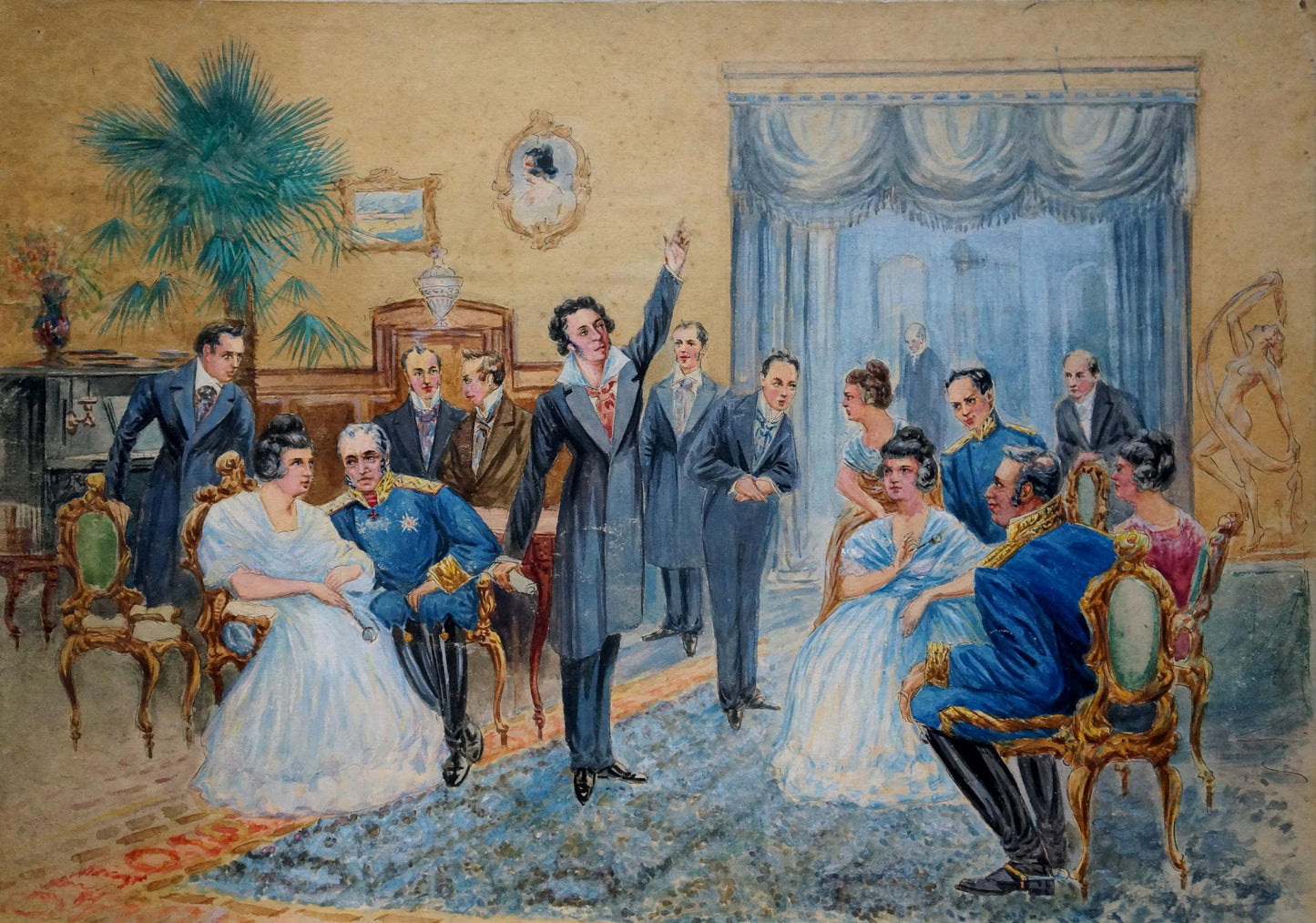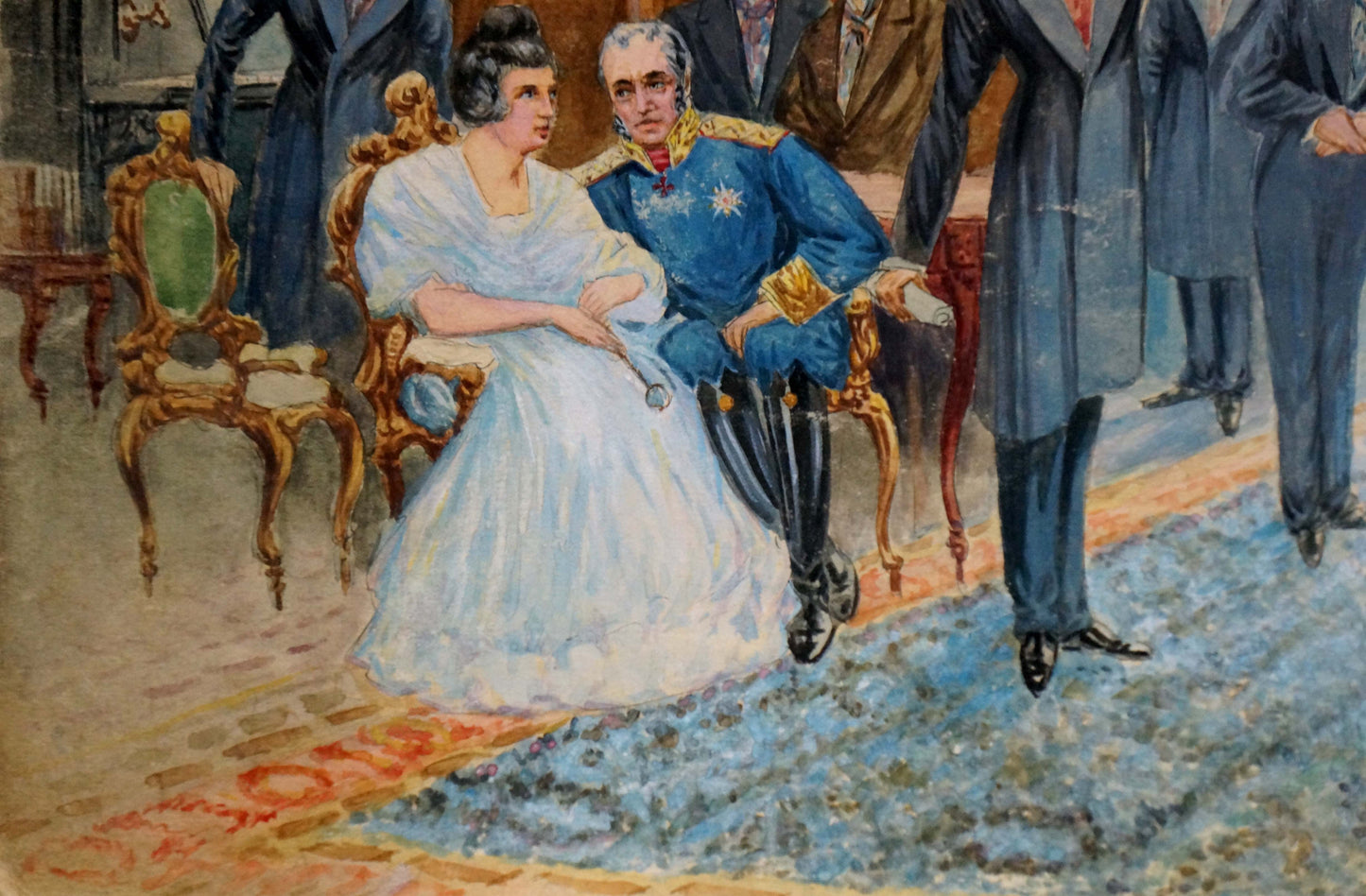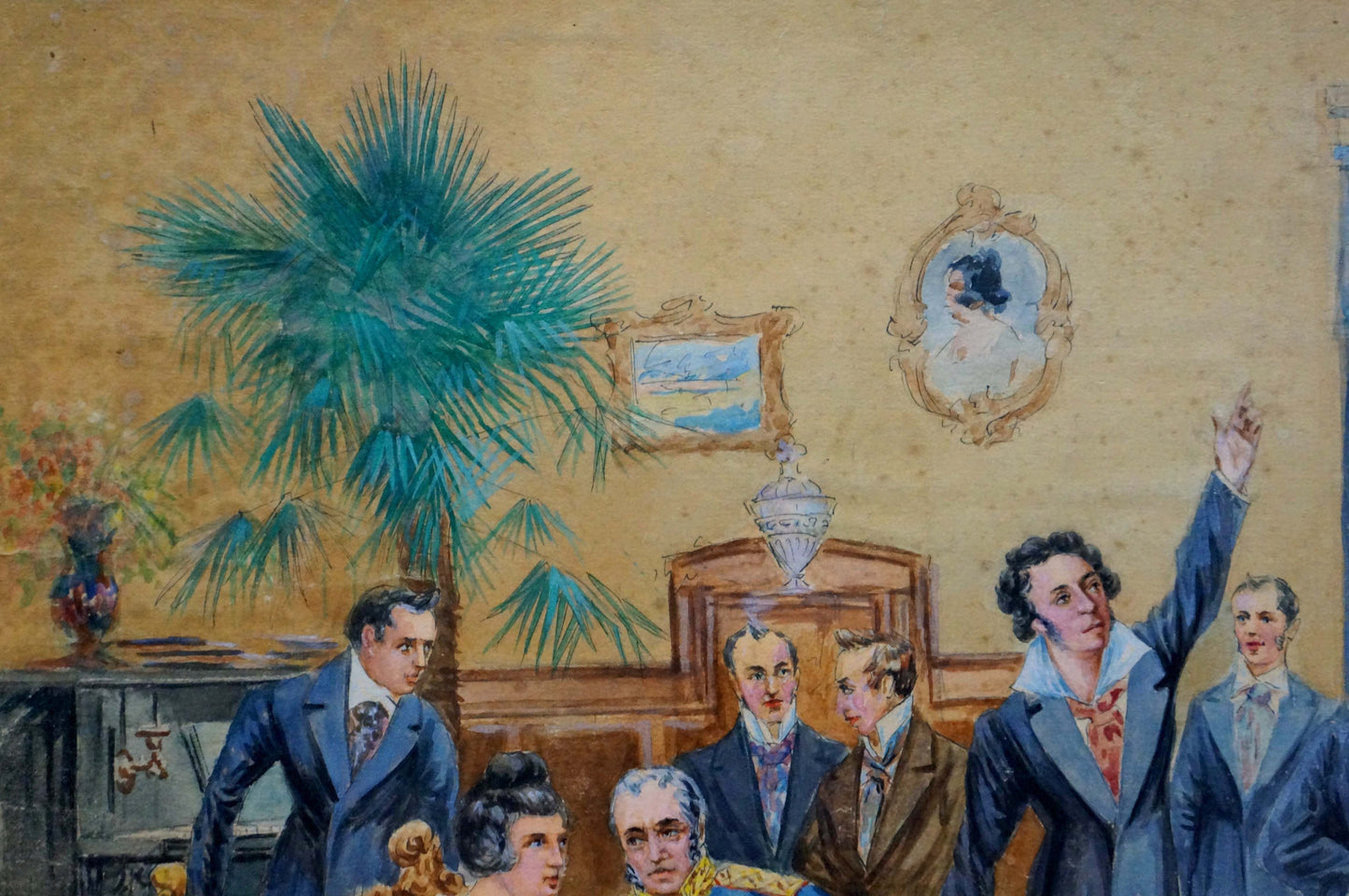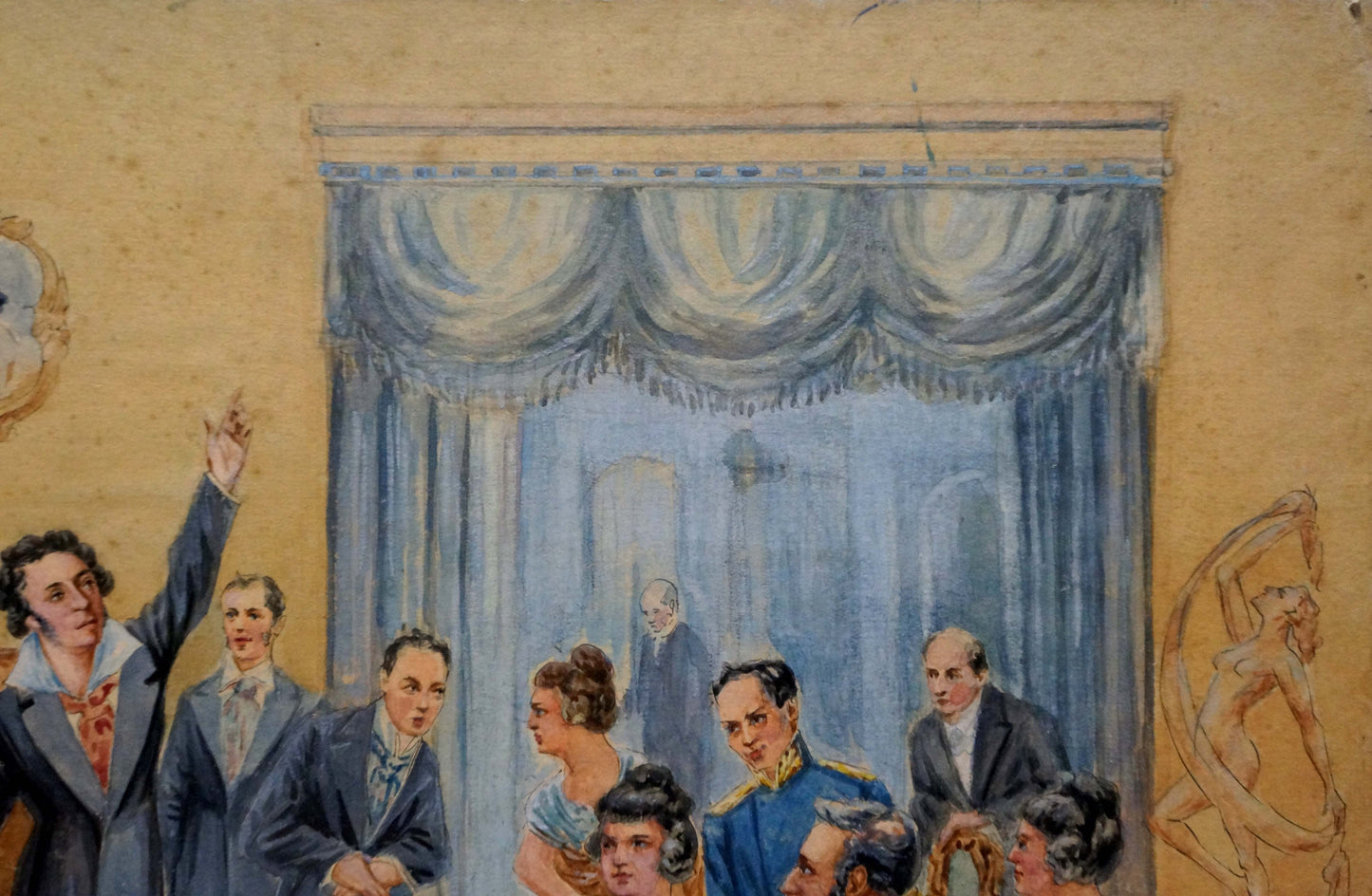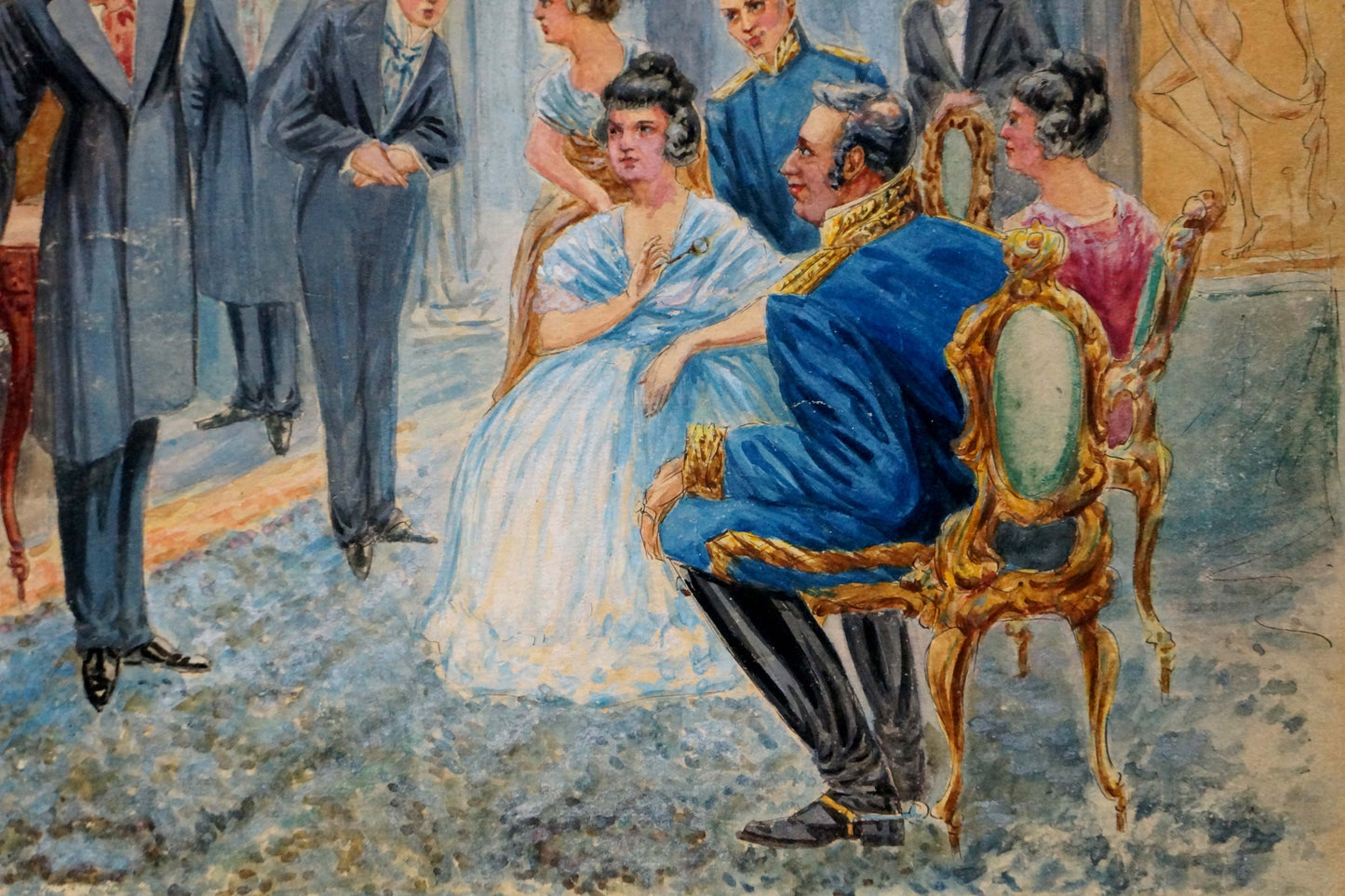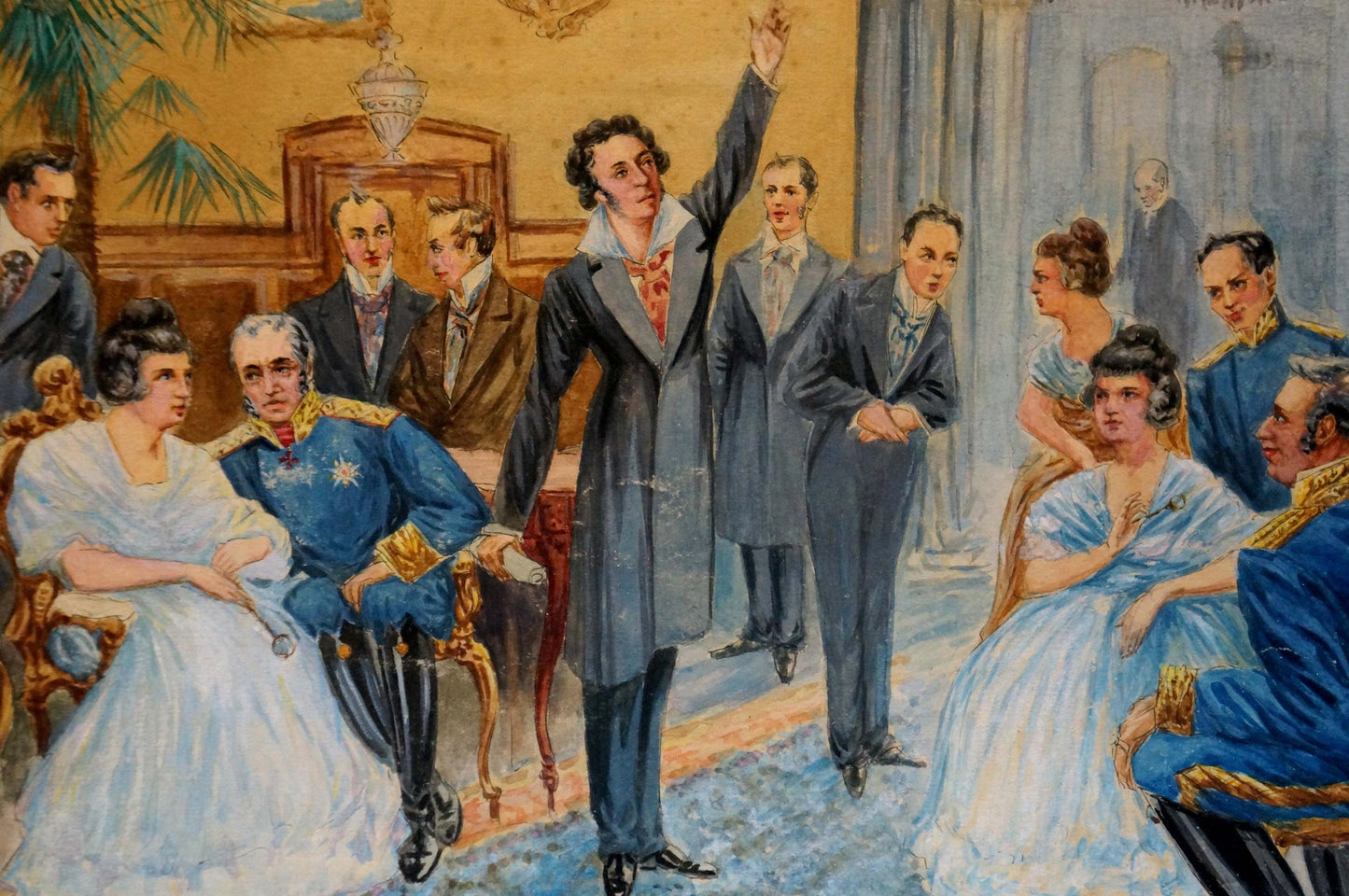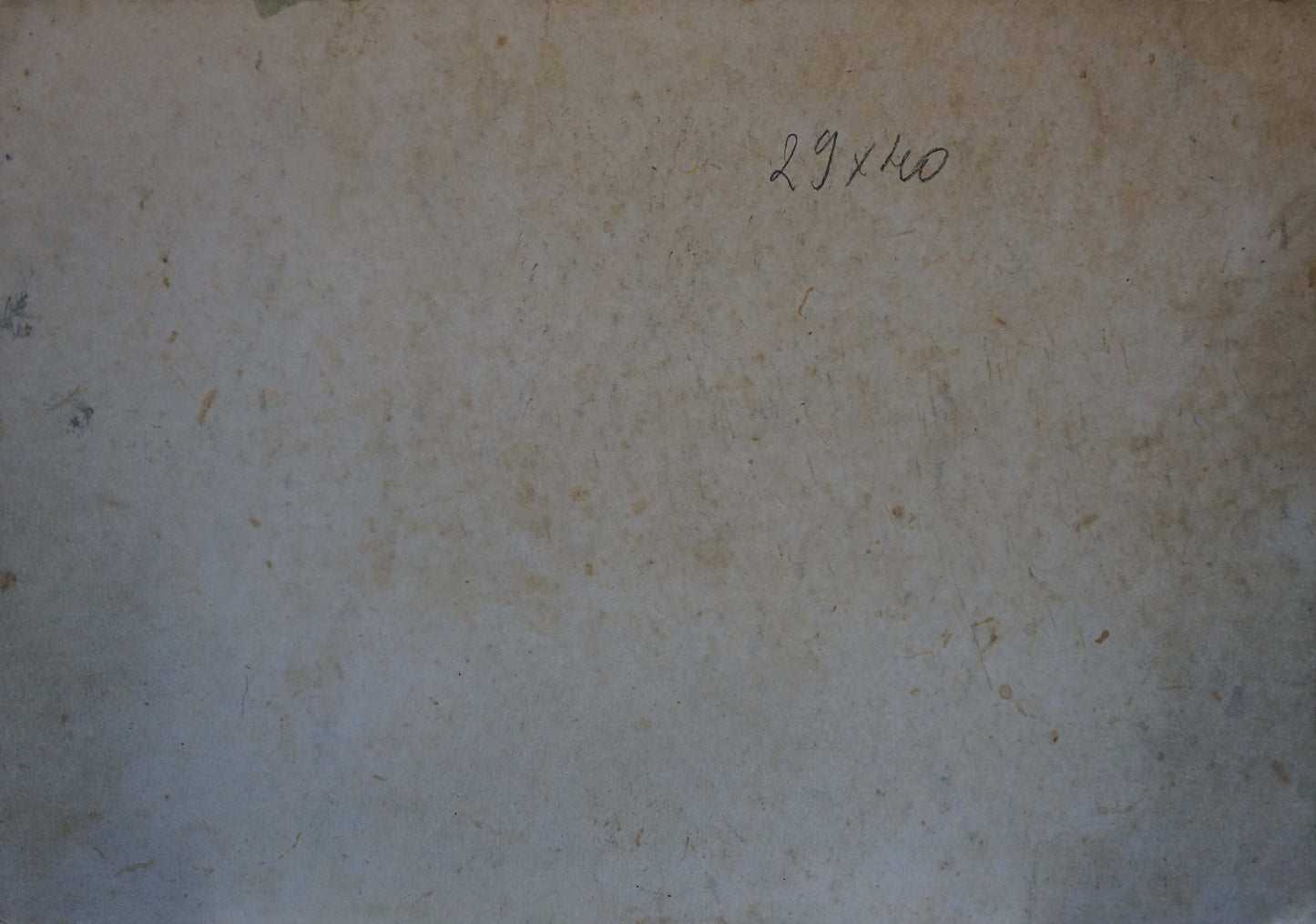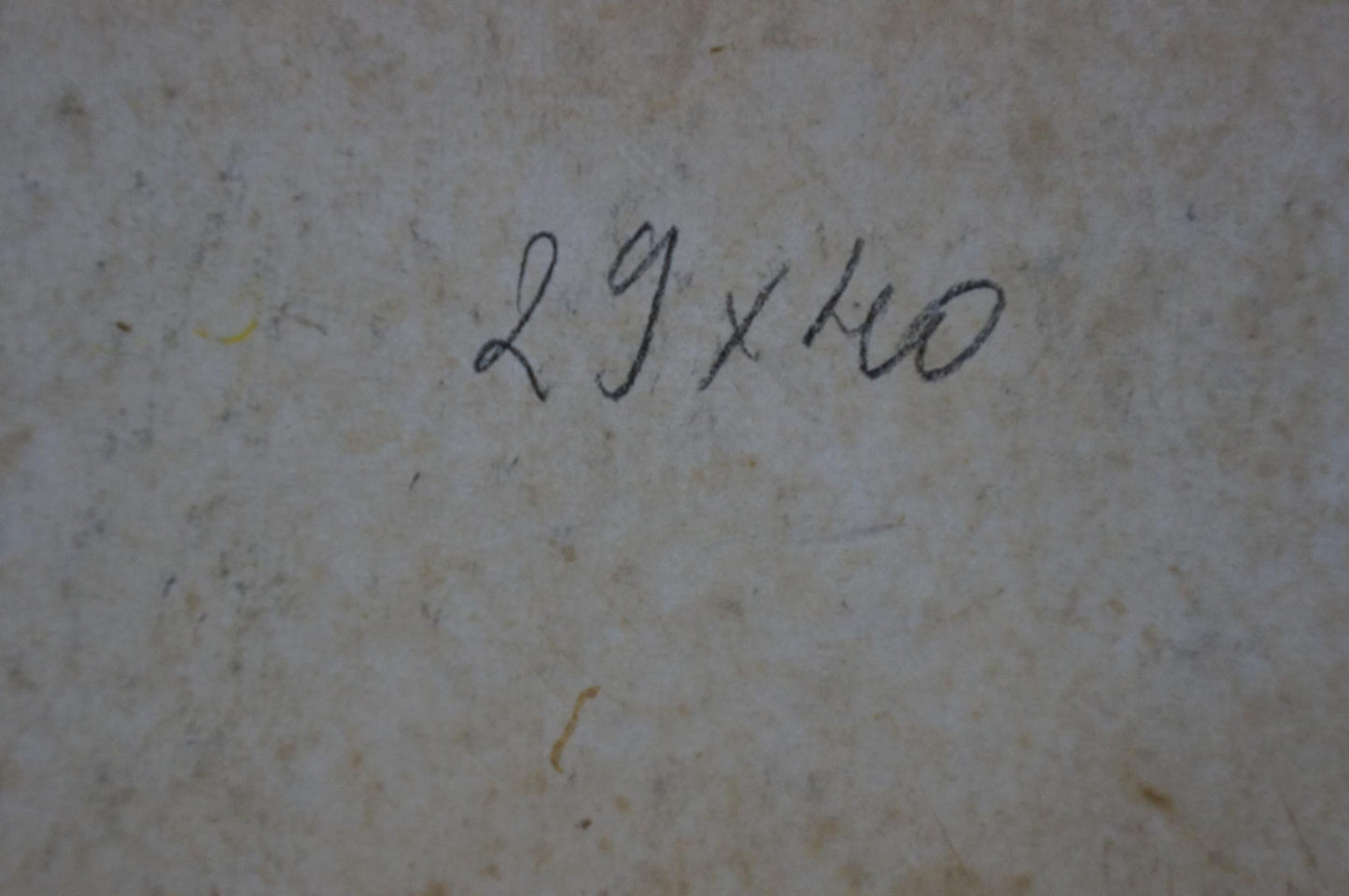1
/
of
8
Painting Noble people Yelena Petrovna Samokish-Sudkovskaya
Painting Noble people Yelena Petrovna Samokish-Sudkovskaya
SKU:Verns498
Regular price
$990.00 USD
Regular price
Sale price
$990.00 USD
Taxes included.
№Verns 498
*** ABOUT THIS PAINTING ***
* TITLE: "Noble people"
* ARTISTS: Yelena Petrovna Samokish-Sudkovskaya
* SIZE: 29x40 cm/'11.41x15.74 inches'
* MEDIUM: cardboard
* HAND PAINTED: Original painting from our collection
* CONDITION: we tried to convey the maximum information with the help of photos about this product
About the artist: Born in St. Petersburg, the daughter of a military engineer. She graduated from the Pavlovsk Institute, studied for two years at a drawing school in Helsingfors and took private lessons from V.P. Vereshchagin. In 1883 she married the academician of painting R.G.Sudkovsky, but after 2 years he died of typhus. In 1885 she left for Paris, where she studied at the private academy of J. Bastien-Lepage. In 1889 she married the artist N. S. Samokish. In this marriage, she adopted the double surname Samokish-Sudkovskaya.
In the 1900s, Elena Petrovna worked in a bookselling poster. She drew a lot for Niva, including decorating the Christmas and Easter issues of the magazine, making drawings of the colored calendars that Niva produced as a New Year supplement. She published drawings in other illustrated publications (Awakening, etc.), drew posters, playbills, theater programs, did publishing and industrial advertising.
Illustrated books, including children's books. She was a member of the First Ladies' Art Circle (1882-1918), her works were exhibited together with the canvases of the masters of Russian art Vereshchagin, Shishkin, Repin. In 1896 she received the Highest award and a medal on a blue ribbon for drawings for the "Coronation Collection".
She painted portraits and genre paintings, but is known mainly as a book illustrator. In particular, she illustrated Pushkin. Her drawings were reproached for deliberate beauty. So they talked about her illustrations for "Eugene Onegin" in the edition of 1908 (publishing house Golike and Vilborg, St. Petersburg). Her illustrations for Ershov's fairy tale "The Little Humpbacked Horse" are also widely known.
The couple worked together at times: so they both participated in the preparation of an illustrated edition of Gogol's Dead Souls (AF Marx's printing house, 1901). In one of the halls of the Vitebsk railway station (at that time - Tsarskoselsky railway station), erected in 1901-1904, the walls are decorated with panels created by them, which are dedicated to the history of the Tsarskoye Selo railway.
Fascinated by modernity, Elena Petrovna in her own work often used a variety of ornamental borders and vignettes, headpieces and endings, fancy and always luxurious garlands. Her works were published in the capital's magazines and on postcards of the publishing house of the St. Eugenia (also known as the Red Cross Publishing House), which in Russia began to issue the first postcards.
After the revolution she lived for some time in Paris, where she died [1] [2]. According to other sources, she died in Vyborg in 1924 [3].
*** ABOUT THIS PAINTING ***
* TITLE: "Noble people"
* ARTISTS: Yelena Petrovna Samokish-Sudkovskaya
* SIZE: 29x40 cm/'11.41x15.74 inches'
* MEDIUM: cardboard
* HAND PAINTED: Original painting from our collection
* CONDITION: we tried to convey the maximum information with the help of photos about this product
About the artist: Born in St. Petersburg, the daughter of a military engineer. She graduated from the Pavlovsk Institute, studied for two years at a drawing school in Helsingfors and took private lessons from V.P. Vereshchagin. In 1883 she married the academician of painting R.G.Sudkovsky, but after 2 years he died of typhus. In 1885 she left for Paris, where she studied at the private academy of J. Bastien-Lepage. In 1889 she married the artist N. S. Samokish. In this marriage, she adopted the double surname Samokish-Sudkovskaya.
In the 1900s, Elena Petrovna worked in a bookselling poster. She drew a lot for Niva, including decorating the Christmas and Easter issues of the magazine, making drawings of the colored calendars that Niva produced as a New Year supplement. She published drawings in other illustrated publications (Awakening, etc.), drew posters, playbills, theater programs, did publishing and industrial advertising.
Illustrated books, including children's books. She was a member of the First Ladies' Art Circle (1882-1918), her works were exhibited together with the canvases of the masters of Russian art Vereshchagin, Shishkin, Repin. In 1896 she received the Highest award and a medal on a blue ribbon for drawings for the "Coronation Collection".
She painted portraits and genre paintings, but is known mainly as a book illustrator. In particular, she illustrated Pushkin. Her drawings were reproached for deliberate beauty. So they talked about her illustrations for "Eugene Onegin" in the edition of 1908 (publishing house Golike and Vilborg, St. Petersburg). Her illustrations for Ershov's fairy tale "The Little Humpbacked Horse" are also widely known.
The couple worked together at times: so they both participated in the preparation of an illustrated edition of Gogol's Dead Souls (AF Marx's printing house, 1901). In one of the halls of the Vitebsk railway station (at that time - Tsarskoselsky railway station), erected in 1901-1904, the walls are decorated with panels created by them, which are dedicated to the history of the Tsarskoye Selo railway.
Fascinated by modernity, Elena Petrovna in her own work often used a variety of ornamental borders and vignettes, headpieces and endings, fancy and always luxurious garlands. Her works were published in the capital's magazines and on postcards of the publishing house of the St. Eugenia (also known as the Red Cross Publishing House), which in Russia began to issue the first postcards.
After the revolution she lived for some time in Paris, where she died [1] [2]. According to other sources, she died in Vyborg in 1924 [3].
Couldn't load pickup availability
